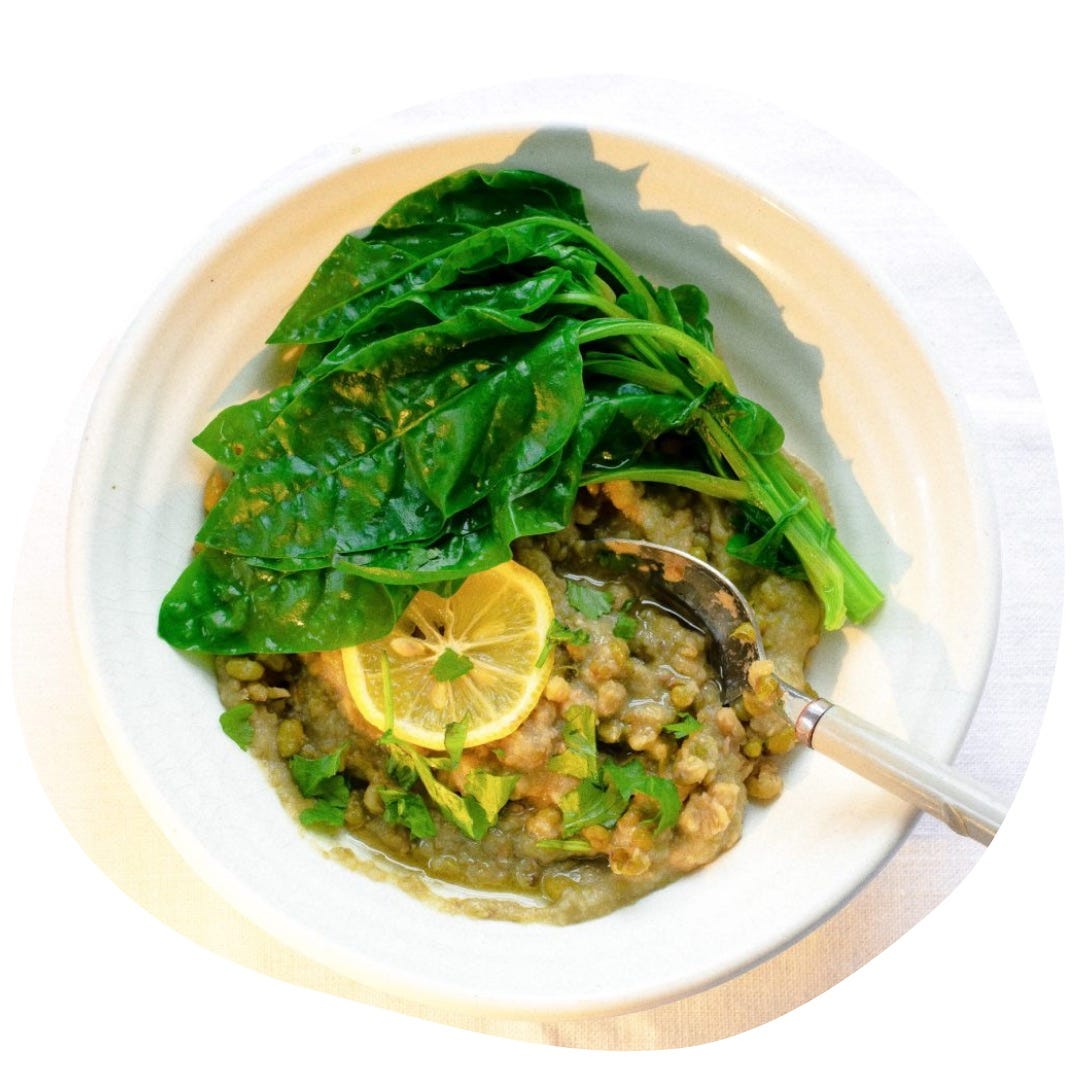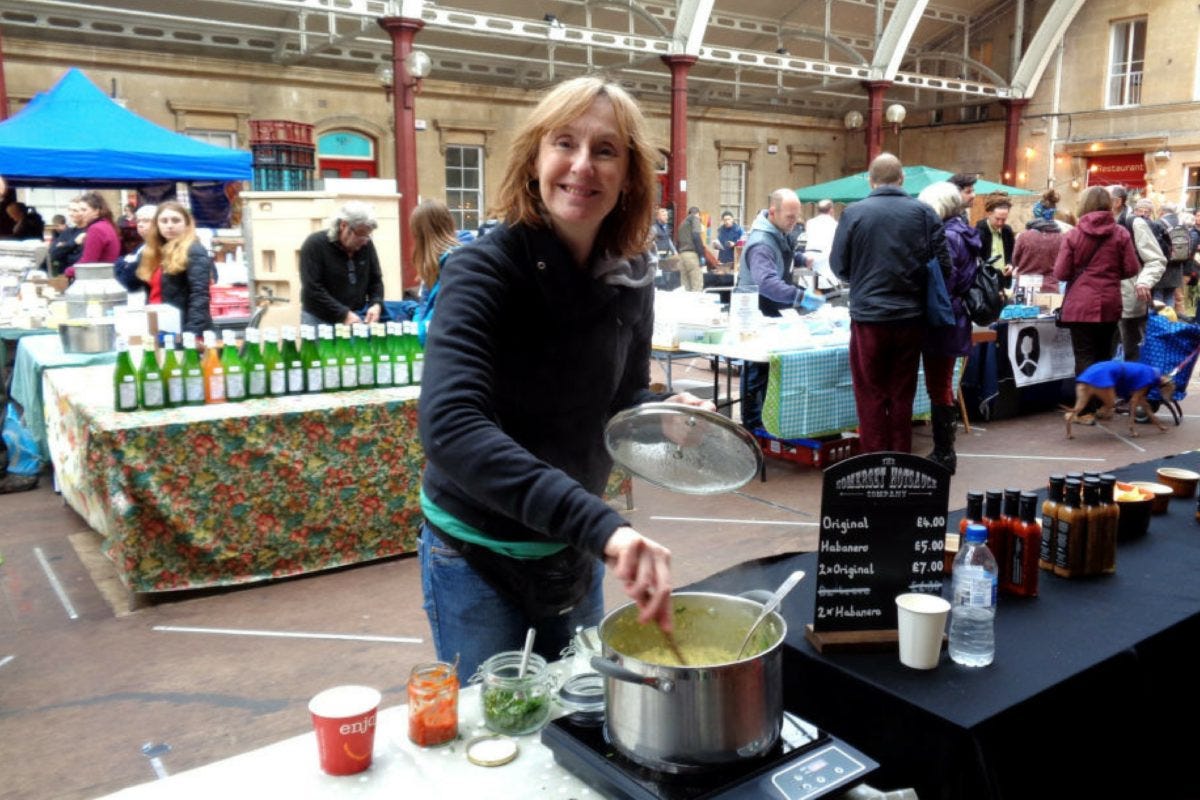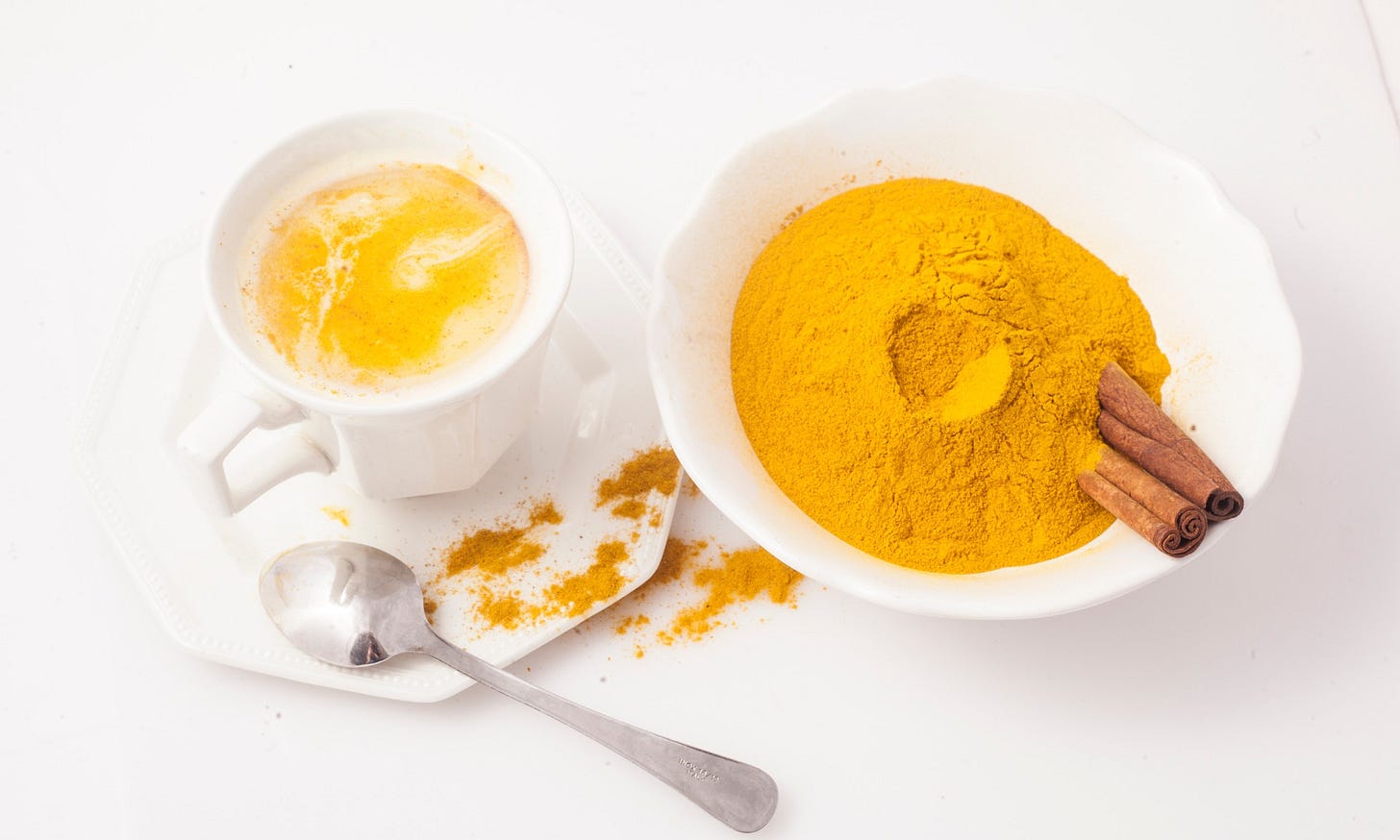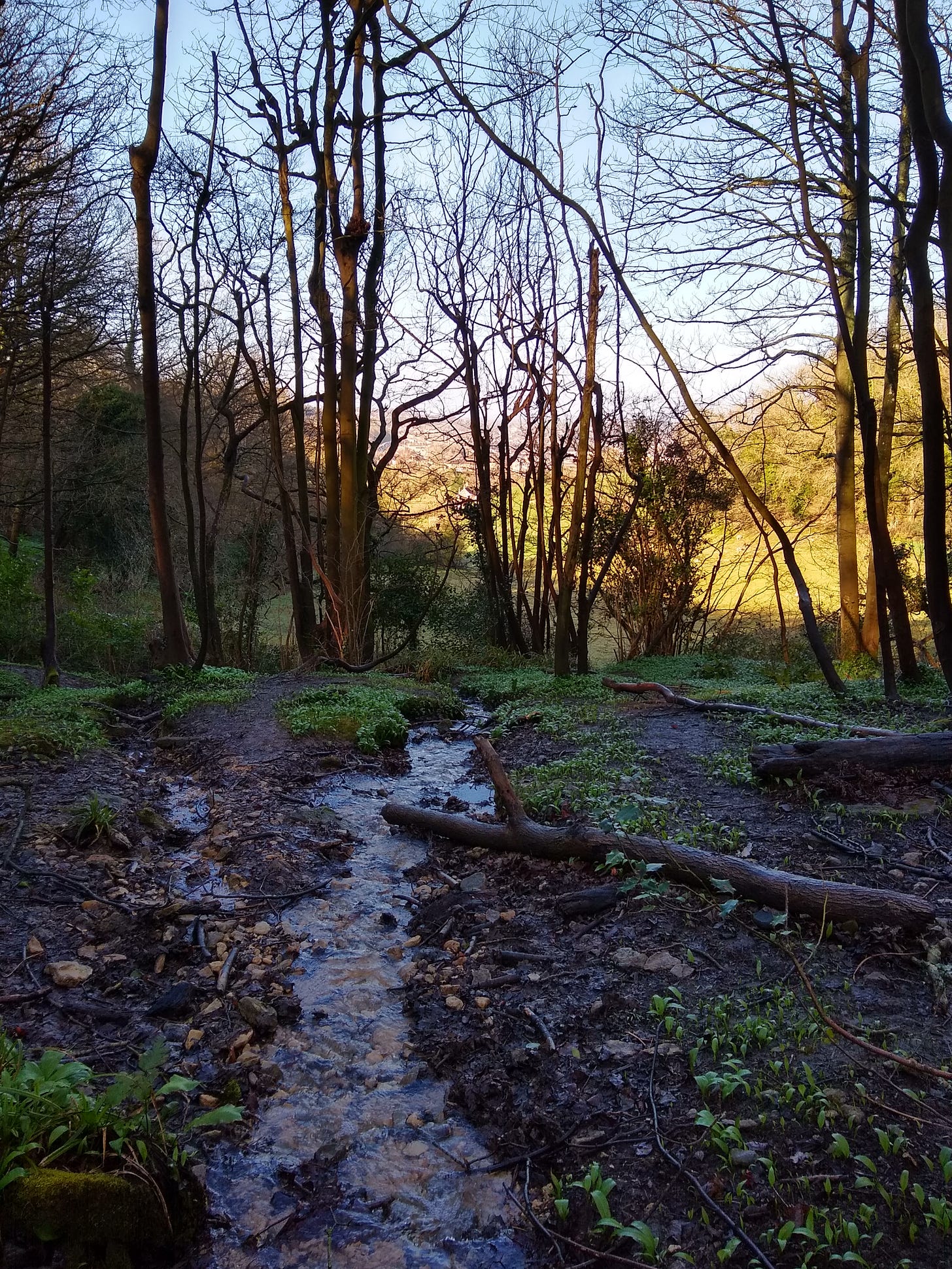Ayurvedic spring cleanse & a bit of Mediterranean blue
Learn the ‘active’ stage of the Ayurvedic cleanse.
Photo by Beate at pixaby
We’ve just had two days of Mediterranean blue skies where I live, giving us a glimpse of things to come. And I found myself dreaming of being in the above picture. Today, April an ever changeable friend, brought the return of charcoal skies patterned with slivers of silver. These too have been beautiful, just a different kind of beauty.
The birds outside my window were quieter, holed up in evergreen branches waiting for the rain to turn back into sunny days. I have been doing the same, as I wove words for a book I’m working on that will be published next spring. It felt very cosy knowing the spring and summer lie ahead, but right now I can bury my head in words, and my body in the sofa to enjoy the last of winters hibernation.
Ayurvedic spring cleanse
On Sunday I chatted through the first stage of the Ayurvedic cleanse which you can read here — pre-cleanse — today I’m going to share how easy it is to do the second ‘active’ stage. The good news is you get to eat. A simple nourishing dish called kitchari for breakfast, lunch and supper. If you prefer you can have a simple porridge for breakfast or some stewed apples with fresh ginger and cinnamon. This ‘active’ stage can be carried out for three to five days.
If you are able to, aim to carry out the active stage of your cleanse when you can relax and take time for yourself. I remember how impossible this would have felt when my boys were young and so if you have children, think about how you could address this, even if for just small parts of the day.
Contraindications
If you are pregnant, breast-feeding, menstruating, recovering from illness, feeling weak or debilitated or experiencing a lot of emotional or physical distress, I don’t recommend a cleanse. If you have any health concerns or are taking prescribed medicines please see your doctor.
Kitchari
I have been told that Kitchari, pronounced kich-ah-ree, is sometimes referred to as khichadi and khichdi. It is an incredibly nutritious, comforting and gently cleansing dish which allowed my digestive challenges to heal. If you are unable to find split mung dahl you can use the mung bean.
In India this dish, as well as being the food you eat for an Ayurvedic cleanse, is prepared for the young, the old, those feeling unwell and anyone in need of a bit of nurturing. It’s India’s traditional comfort food and people have been making it for thousands of years. One Saturday morning when I was selling kitchari on my farmers market stall, I saw a lady’s eyes light up. She came over and told me her mum used to make this meal, and that just about every home in India will have their own version of this beautiful, simple dish.
When I arrived at my farmers market stall, I always set up a batch of kitchari steaming away that I had made earlier, and the morning rhythm of customers would empty my pan as I refilled. This was especially satisfying on cold winter days when people would surround my stall for tastes and chatter and jars to take away with them. This picture was taken towards the end of one morning, with nothing left to fill up the pan with, but just enough for lunch.
When I sold kitchari on my market stall I had lots of toppings that turned this simple dish into a feast, but in the recipe I’m sharing today I’ve kept it very simple, because that is what is needed during a cleanse.
Here is a shopping list for your active cleanse day.
Shopping list
Split mung dahl (if you can’t find this buy mung beans)
White basmati rice
Ghee (or make your own it’s much cheaper a recipe follows)
A block of unsalted organic butter (if making ghee)
Asafoetida (Hing) powder
Black pepper seeds
Cardamon pods
Coriander seeds
Cumin seeds
Fennel seeds
Fenugreek seeds
Turmeric powder or root
Fresh ginger root
Cilantro
Lemons
Bitter leaves (better still forage dandelion leaves and root and nettles)
Rock salt or other mineral salt (processed sea salt has the minerals stripped from it)
Triphala powder (available online and in some health shops)
Organic cold-pressed sesame oil (if you know you have a pitta imbalance buy coconut oil instead or of you know you have a Kapha imbalance use safflower oil)
Here is a recipe for a simple kitchari suitable for an Ayurvedic spring cleanse.
Kitchari Recipe
INGREDIENTS — per serving
1/4 cup split mung dahl soaked for a few hours and rinsed
1/4 cup basmati rice soaked for a few hours and rinsed
4 cups water
2 tablespoons ghee
1/2 teaspoon asafoetida (Hing) powder
1/2 teaspoon black pepper seeds
5 cardamon pods
2 tablespoons coriander seeds
1/4 - 1 teaspoon cumin seeds (depends on your taste preference)
1 teaspoon fennel seeds
1/2 teaspoon fenugreek seeds
1 teaspoon turmeric powder or 3 inches of freshly grated root
3 inches freshly grated ginger root
Rock salt to season
1 lemon
Cilantro
1 cup freshly chopped bitter leaves (dandelion leaves and nettles are good)
1/2 cup scrubbed and chopped dandelion root if you can find it
METHOD
Melt the ghee and toast the spices — feel free to make your own spice mix with the spices, leaving our what you don’t like, using more of what you do like, letting your taste buds and sense of smell decide. Once the spices have cooked in the ghee for a minute or two and smell gorgeous add the grated ginger root, chopped dandelion root if using, dahl and rice. Toast these in the ghee for a minute then add the water. Simmer until cooked. Season with the rock salt and fresh lemon juice, to satisfy your tastebuds and serve with freshly chopped cilantro. You can add a little more ghee to melt over the top.
— You can make this in a slow cooker overnight by adding spices toasted in ghee to the slow cooker with the other ingredients.
You are meant to feel satiated, so make sure you eat enough at each meal. This recipe makes one serving to satisfy a small frame but we all have different needs, so you may need to play with the quantities to get the right sized portion for you. If you feel hungry in the evening, have a cup of golden milk. There is a recipe for that here.
Meal times & drinks
Eat your first bowl of kitchari for breakfast. If you prefer have a simple porridge or stewed apples with cinnamon and freshly grated ginger. Eat the second bowl of kitchari around midday and the final bowl around 5.30 pm. Throughout the day sip herbal teas. Fresh ginger is good, and traditionally a digestive tea is made from 1 teaspoon each of coriander, cumin and fennel seeds.
Other things to include
Other things to include during this stage are getting up pre-dawn — this will reset your circadian rhythm — and going to sleep by 10 pm, so that you can benefit from the hours between 10 pm and 2 am when the body goes into healing mode if you are asleep.
First thing in the morning enjoy a mug of hot water with fresh ginger in it when you get up and after about 20 minutes, do some gentle yoga. A few rounds of Sun Salutation are always good. Next carry out Abhyanga, which is a self-massage routine using lots of oil, you can find instructions here. After this nourishing self-massage have a warm bath or shower, then relax and eat your breakfast.
Before going to bed drink 1/2 teaspoon triphala powder in a mug of hot water which has been steeped this for 10 minutes.
Here is a link about triphala, always check in with your doctor if you are taking any medication, herbal remedies or have any concerns.
Living simply
Living simply during your cleanse is also important. Take these ‘active’ cleanse days — 3 to 5 — off work if possible, really caring for your body, heart and mind.
As you relax into your day stay away from phones, computers and TV. Rest, listen to relaxing music or read light-hearted books. Spending time in nature is very beneficial. These days are for taking time to just be. If you live in a city and don’t have access to a park nearby, ‘being’ in nature might be looking out of your window at the sky or a garden.
On one of my active cleanse days I gazed down into the front garden at the deep brown earth, enjoying the way the wild garlic and bluebells looked. My neighbours and I had transplanted them from the back garden the week before. The wild garlic was standing tall, but the bluebell leaves were still lying across the dark brown damp soil, with rain washing over them. I spent quite a time drinking in the wonder of it all, noticing the rain drops, the vibrancy of the leaves, appreciating the beauty of that tiny patch of ground in every way I could.
Emotions
During these days you may find unresolved emotions arise, and that’s just fine. Whatever it is, however it feels, it’s just molecules of emotions releasing, and you will feel so much better for it after the cleanse. The trick is not to hold a story about any feelings that arise, just let them flow through like a gentle stream returning to the sea.
Let me know in the comments if you have any questions as you are moving through this cleanse.
Well, that’s it for today. I hope you are having a lovely week. Fridays post will explain the third stage of this gentle home cleanse — reintroduction and rejuvenation.
Warmest wishes,
Lucy x











I enjoyed your writing,,'s